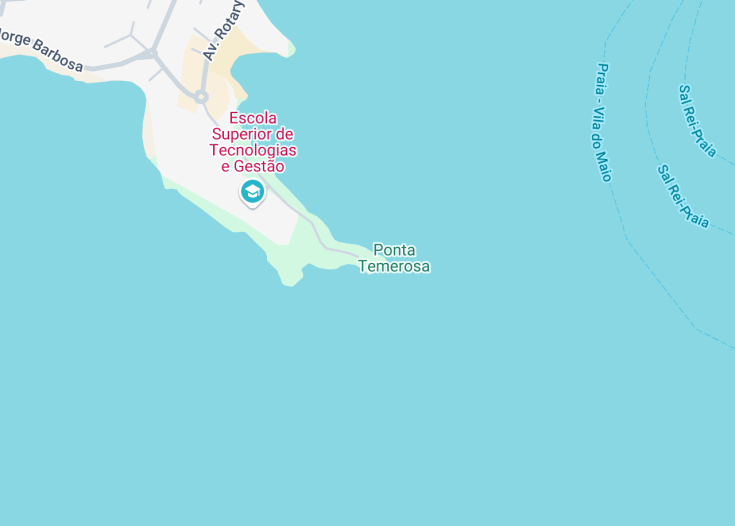Perched on the precipice of a cliff overlooking the Atlantic, the Lighthouse Dona Maria Pia is a historic beacon in Cabo Verde, situated on the Santiago Island. This lighthouse, named after Queen Dona Maria Pia of Portugal, has guided sailors since the late 19th century. Standing against a backdrop of rugged cliffs and expansive ocean views, this lighthouse offers visitors a unique glimpse into Cabo Verde’s nautical history and breathtaking natural beauty. Its strategic location not only serves maritime purposes but also provides a spectacular vantage point for panoramic views of the azure waters.
Before heading to the lighthouse, check the local weather conditions as the cliffside can be quite windy and the area is best enjoyed on a clear, calm day.
Wear comfortable shoes and bring a camera. The path to Dona Maria Pia is rugged, and you’ll want to capture the stunning cliff-top ocean views once you arrive.
Exploring the Lighthouse Dona Maria Pia
The Lighthouse Dona Maria Pia, situated at the southern tip of Santiago Island in Cabo Verde, marks a significant historical and navigational point. Established in the late 19th century, this beacon has guided mariners navigating the Atlantic Ocean and around the Praia harbor. The lighthouse got its name from Maria Pia of Savoy, the queen of Portugal at the time, emphasizing its historical ties and importance.
Today, it stands as a compelling attraction for visitors due to its picturesque setting and the panoramic views it offers. From the lighthouse, tourists can gaze out over the vast ocean and the rugged coastline of Santiago. The site itself is steeped in history, featuring classic colonial architecture and is often highlighted by the stories of its keepers and past maritime significance. Its remote location offers a tranquil retreat from the bustling city life of Praia. The Lighthouse Dona Maria Pia is not just a navigational aid but a beacon of cultural heritage, making it a must-visit for anyone touring Cabo Verde.
Activities at Lighthouse Dona Maria Pia
The area around the Lighthouse Dona Maria Pia offers various activities that enhance the visitor experience. Firstly, the site is perfect for sightseeing, with its dramatic views of the Atlantic Ocean and the rugged terrains of Santiago. Photography enthusiasts will find the scenery around the lighthouse particularly compelling, especially at sunset when the sky and sea are aflame with colors.
Hiking and Tours
For those who appreciate a bit of adventure, there are guided tours available that cover the history and operation of the lighthouse. Additionally, hiking along the surrounding trails provides a closer look at the local flora and fauna. These hikes can be both relaxing and educational as they often include discussions about the area’s ecological aspects and historical significance.
An Insight into Maritime Navigational History
One particularly interesting aspect of the Dona Maria Pia Lighthouse is its historical role in maritime navigation. The lighthouse has been an integral part of the navigational systems that support sea travel around the Praia harbor and beyond. It stands as a testament to the evolution of maritime technology and the importance of lighthouses in ensuring safe passage through treacherous waters. Its continuous operation over the years also highlights the ongoing relevance of traditional navigational aids in the age of modern GPS systems.
Explore the Charm of Lighthouse Dona Maria Pia
The Lighthouse Dona Maria Pia serves as a captivating destination for travelers of all ages, but it is especially ideal for couples and history enthusiasts. Steeped in historical importance and offering breathtaking views of the surrounding seascape, this lighthouse provides a romantic atmosphere and a tranquil escape from the bustle of everyday life. Visitors can look forward to a serene experience, learning about the lighthouse’s history, and indulging in photography or relaxing walks along the nearby shores.
Best time to Visit Lighthouse Dona Maria Pia
The ideal time to visit Lighthouse Dona Maria Pia is during the spring and autumn months, when the weather is pleasant, and the tourist crowds are thinner. During these seasons, the climate is conducive for long walks and extended periods of outdoor exploration around the lighthouse.
Annual Light Festival
Every year, the lighthouse hosts the Lighthouse Festival of Lights, typically held in early November. This event features stunning light displays, local handicraft markets, and musical performances, making it the perfect time for a visit.
Accessibility and Limitations
The Lighthouse Dona Maria Pia is accessible to visitors, but there are certain limitations to be aware of.
Accessibility
Limitations
- Due to its historic nature, certain sections might be restricted.
- Large bags and eatables are not allowed inside the lighthouse.
Notes to Visitors
- Photography is allowed but drones may require special permission.
- It’s advisable to wear comfortable footwear for easy navigation.
General Information
Details for your visit to Lighthouse Dona Maria Pia
Location
The lighthouse is situated near prominent coastal walkways and is easily recognizable by its historic façade.
Address:
123 Historical Lighthouse Road, Marina South, Praia
Opening Hours
The Lighthouse Dona Maria Pia is open to visitors from 9:00 AM to 6:00 PM daily, with last admission at 5:30 PM. It is closed on national holidays.
Reaching the Lighthouse Dona Maria Pia
Car
For those driving, the lighthouse has a dedicated parking area. It is conveniently located a short drive from major city centers.
| Route | Distance | Travel Time |
|---|---|---|
| From Downtown Praia | 5 miles (8 km) | 15 minutes |
| From Cidade Velha | 10 miles (16 km) | 25 minutes |
| From Cape Verde Airport | 12 miles (19 km) | 30 minutes |
Public Transit
Regular bus services connect the lighthouse with major parts of the city. Buses run every 30 minutes during peak hours from Cidade Velha and Downtown Praia.
Nearby Attractions
Explore these nearby attractions to make the most of your visit:
- Marina Bay Sands – 0.5 miles (0.8 km)
- Praia City Park – 2 miles (3.2 km)
- Historic Museum of Praia – 3 miles (4.8 km)
- Seaside Sculpture Park – 1 mile (1.6 km)
- Baía do Fanal Beach – 4 miles (6.4 km)
- Tropical Botanical Garden – 2.5 miles (4 km)
- Artisanal Craft Market – 3.5 miles (5.6 km)
- Colonial Fortress – 2 miles (3.2 km)
Common Questions
What is the historical significance of Lighthouse Dona Maria Pia?
How can visitors contribute to the preservation of Lighthouse Dona Maria Pia?
What are the architectural features of Lighthouse Dona Maria Pia?
Are there any local legends or stories associated with Lighthouse Dona Maria Pia?
What kind of wildlife can be seen around Lighthouse Dona Maria Pia?
What are the local culinary specialties tourists can try when visiting Lighthouse Dona Maria Pia?
How do the local communities benefit from tourism generated by Lighthouse Dona Maria Pia?
What type of maintenance is required to keep Lighthouse Dona Maria Pia operational?
Are there any annual cultural events held at Lighthouse Dona Maria Pia?
What are the environmental policies in place to protect the area around Lighthouse Dona Maria Pia?
What photography tips do experts recommend for capturing Lighthouse Dona Maria Pia?
What safety precautions should visitors take while exploring around Lighthouse Dona Maria Pia?

Is the Lighthouse Dona Maria Pia in Praia Worth Visiting?
The Lighthouse Dona Maria Pia, located in Praia, carries historical significance, being a beacon for the city since the late 19th century. For those keen on maritime history or colonial architecture, it presents an interesting, albeit brief, diversion. Given its proximity to Praia’s city center, it’s easily accessible, making it a convenient stop for those already exploring nearby sites.
However, apart from its historical value, the lighthouse offers little in terms of visitor engagement or interpretative displays. There are no guided tours or detailed informational placards. It’s a picturesque spot from a distance but lacks interactive experiences that many tourists seek today. While not a must-visit, it could be worth a short visit for those already in the area or for enthusiasts of nautical history.









